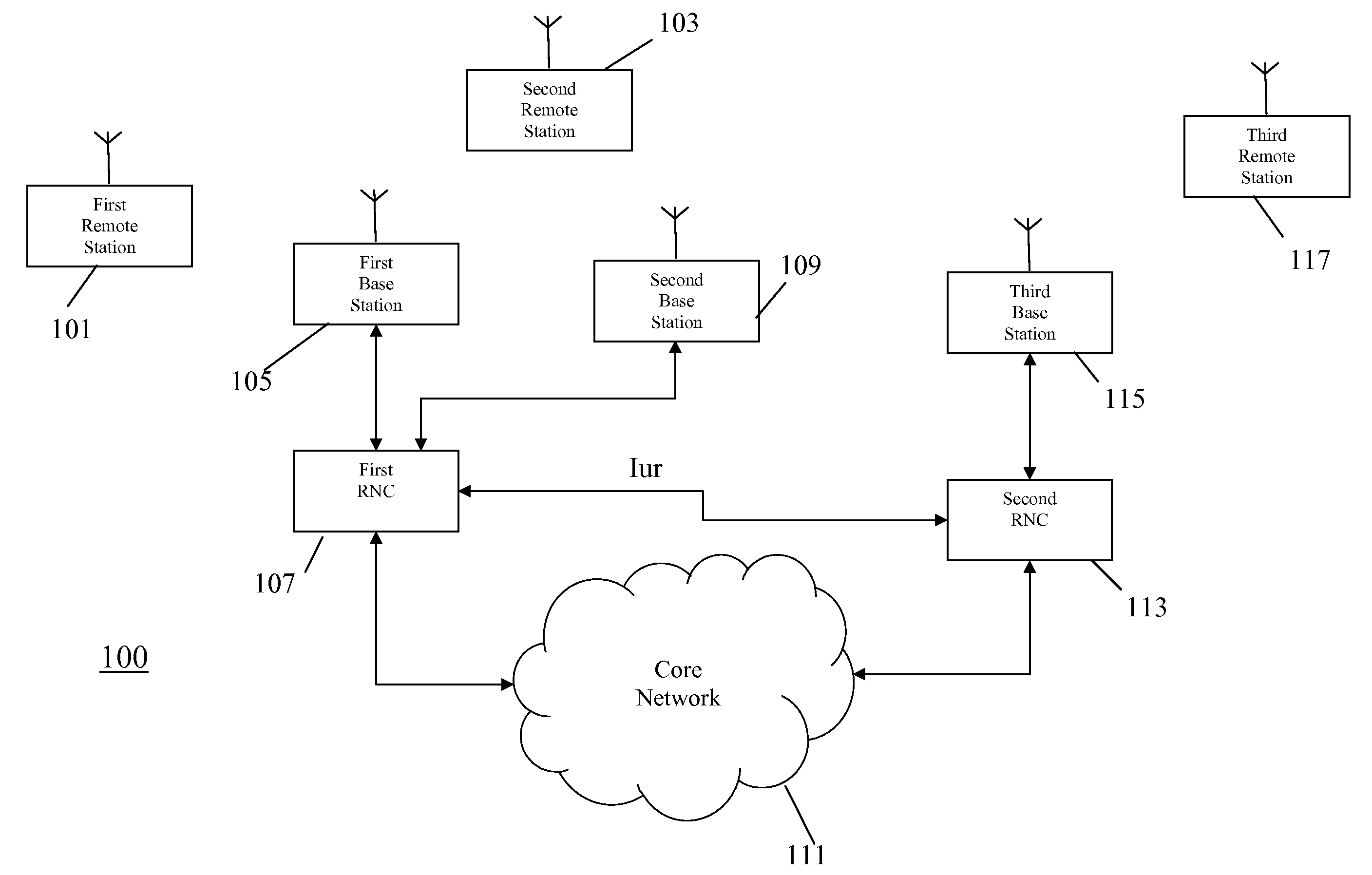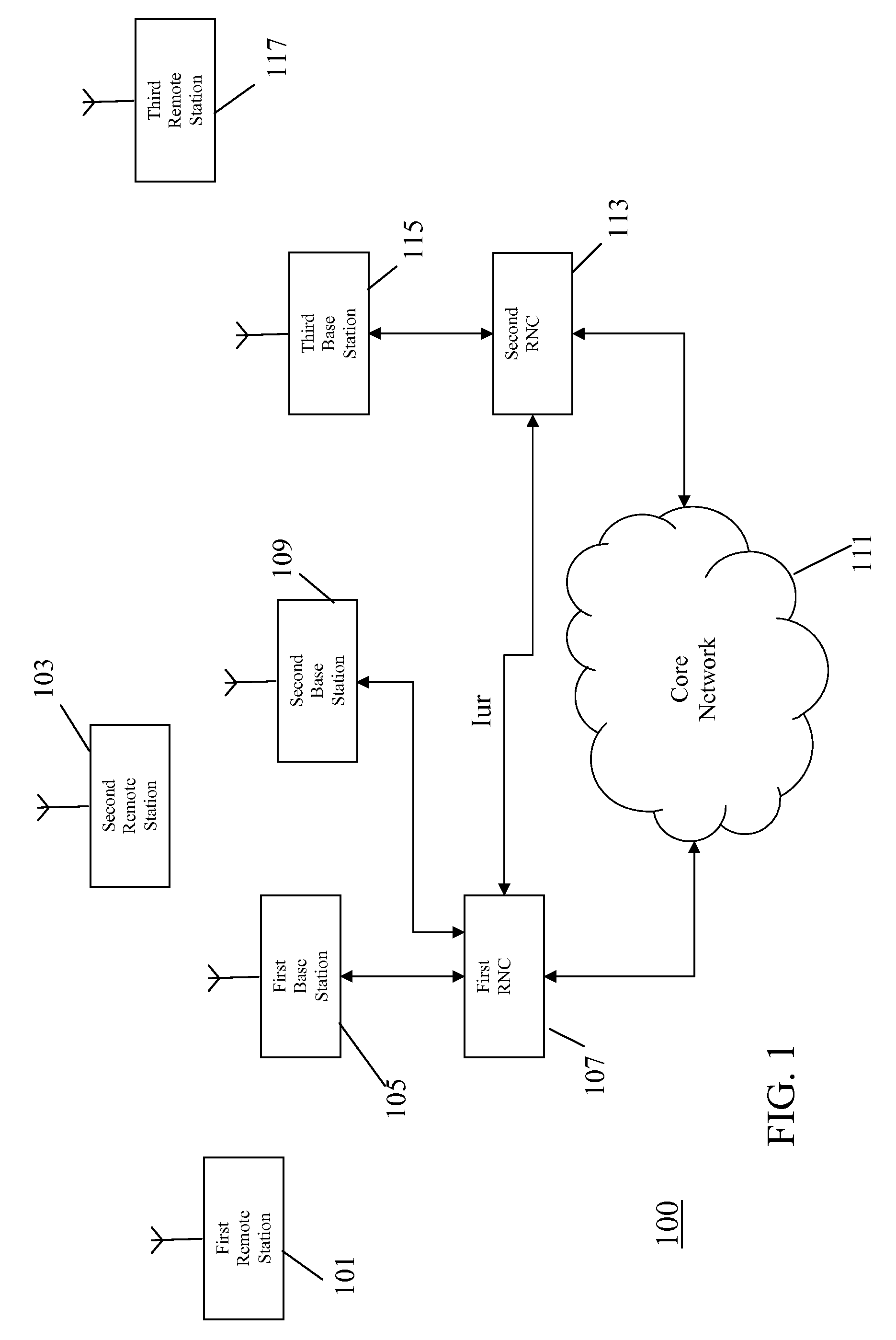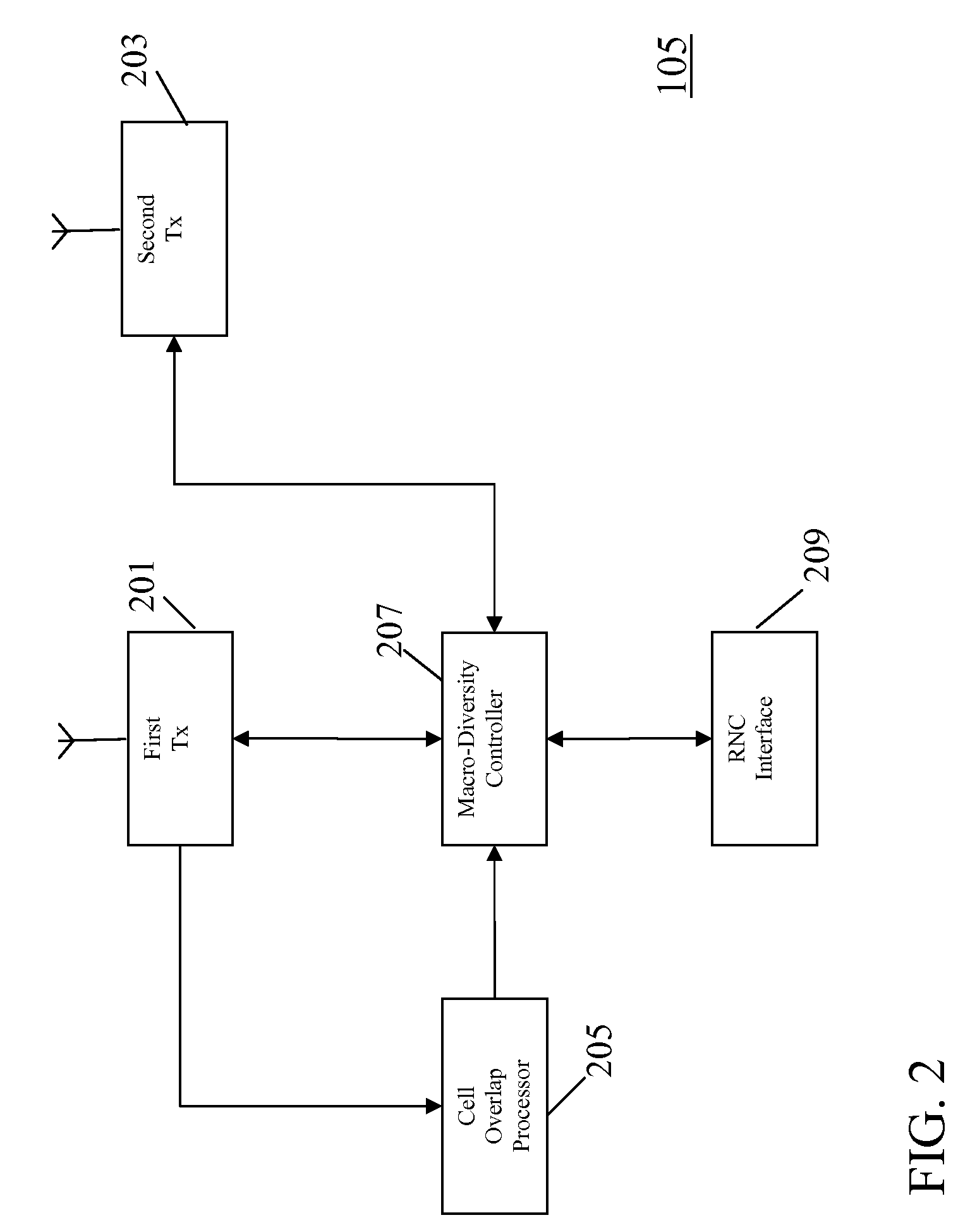High speed download packet access communication in a cellular communication system
download technology, applied in the field of high-speed download packet access communication in a cellular communication system, can solve the problems of poor quality of service of mobile stations, no mechanism available to recover packets, and possible call drop at cell edges, so as to facilitate operation and improve performan
- Summary
- Abstract
- Description
- Claims
- Application Information
AI Technical Summary
Benefits of technology
Problems solved by technology
Method used
Image
Examples
Embodiment Construction
[0059]FIG. 1 illustrates an example of a UMTS cellular communication system in accordance with some embodiments of the invention.
[0060]In a cellular communication system, a geographical region is divided into a number of cells each of which is served by a base station. The base stations are interconnected by a fixed network which can communicate data between the base stations. A remote station (e.g. a User Equipment (UE) or a mobile station) is served via a radio communication link by the base station of the cell within which the remote station is situated.
[0061]In the example of FIG. 1, a first remote station 101 and a second remote station 103 are in a first cell supported by a first base station 105.
[0062]The first base station 105 is coupled to a first RNC 107 which is further coupled to a second base station 109. An RNC performs many of the control functions related to the air interface including radio resource management and routing of data to and from appropriate base station...
PUM
 Login to View More
Login to View More Abstract
Description
Claims
Application Information
 Login to View More
Login to View More - R&D
- Intellectual Property
- Life Sciences
- Materials
- Tech Scout
- Unparalleled Data Quality
- Higher Quality Content
- 60% Fewer Hallucinations
Browse by: Latest US Patents, China's latest patents, Technical Efficacy Thesaurus, Application Domain, Technology Topic, Popular Technical Reports.
© 2025 PatSnap. All rights reserved.Legal|Privacy policy|Modern Slavery Act Transparency Statement|Sitemap|About US| Contact US: help@patsnap.com



